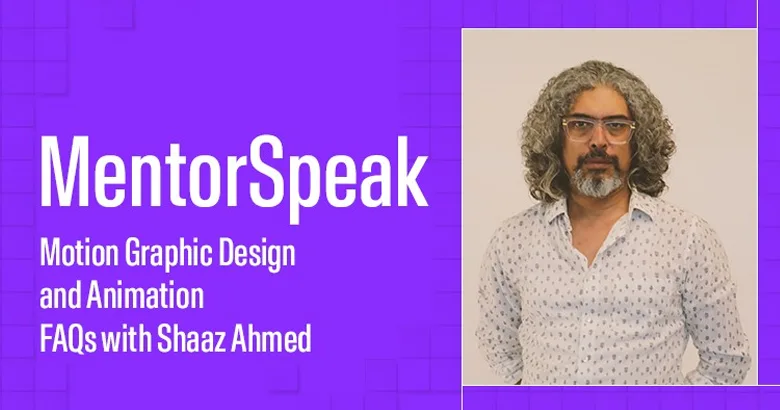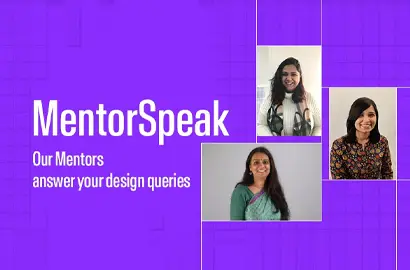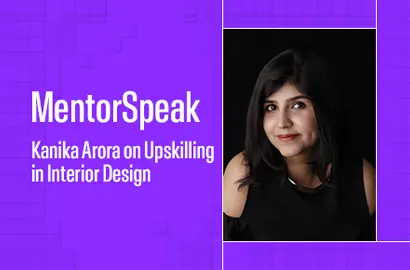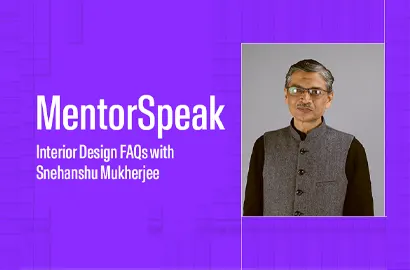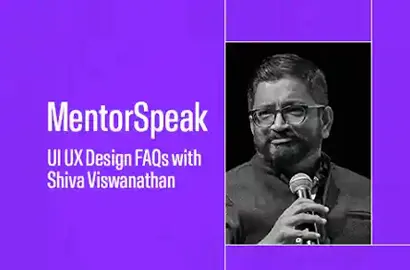Ready for a peep into the world of animation through this conversation? Read on.
Q1. How did you come to pursue a career in Animation?
This is going to sound bizarre, but my decision to pursue animation was somewhat influenced by Tom and Jerry- majorly because that was all the animation that we got to see back in those times. It drove my fascination for the field, combined with the fact that as a child I could draw cartoons and eventually got into publishing political cartoons while young. Quite a big achievement for a kid, I’d say. So, I believe I always knew I wanted to do something along these lines.
But, initially, I wanted to be an architect and so in my 11th grade, I made a trip to Ahmedabad to visit CEPT. While I was visiting Ahmedabad I thought I might as well check NID, and coincidently, I happened to enter the animation room. That is when I saw all the work that students had made and the process of animation. Given my childhood experiences, at the back of my mind, I always knew I was a cartoonist and I could draw, so I think that visit to NID actually sealed the deal.
Q2. What was the turning point in your career?
Nobody knew of animation back when I started in the field, except for some senior animators. Therefore, in my case, I believe it was serendipity given that I got my first project, a film for the UN, while I was out watching a movie at Siri Fort in New Delhi. But this had a slightly negative impact on my profession too, because now that I had made a film, I became what the industry calls a producer, and nobody was willing to give me a job as an animator. So that’s how I began with films.
Filmmaking, however, was always a passion and I liked the idea of doing animation and all the experimental stuff that I was taught at NID. Then there was this huge influence of the National Film Board of Canada and ideas like identity, originality, culture, and ethos that I wanted to explore. But the Chance Project, the first project of my life, had the biggest impact on the rest of my career trajectory.
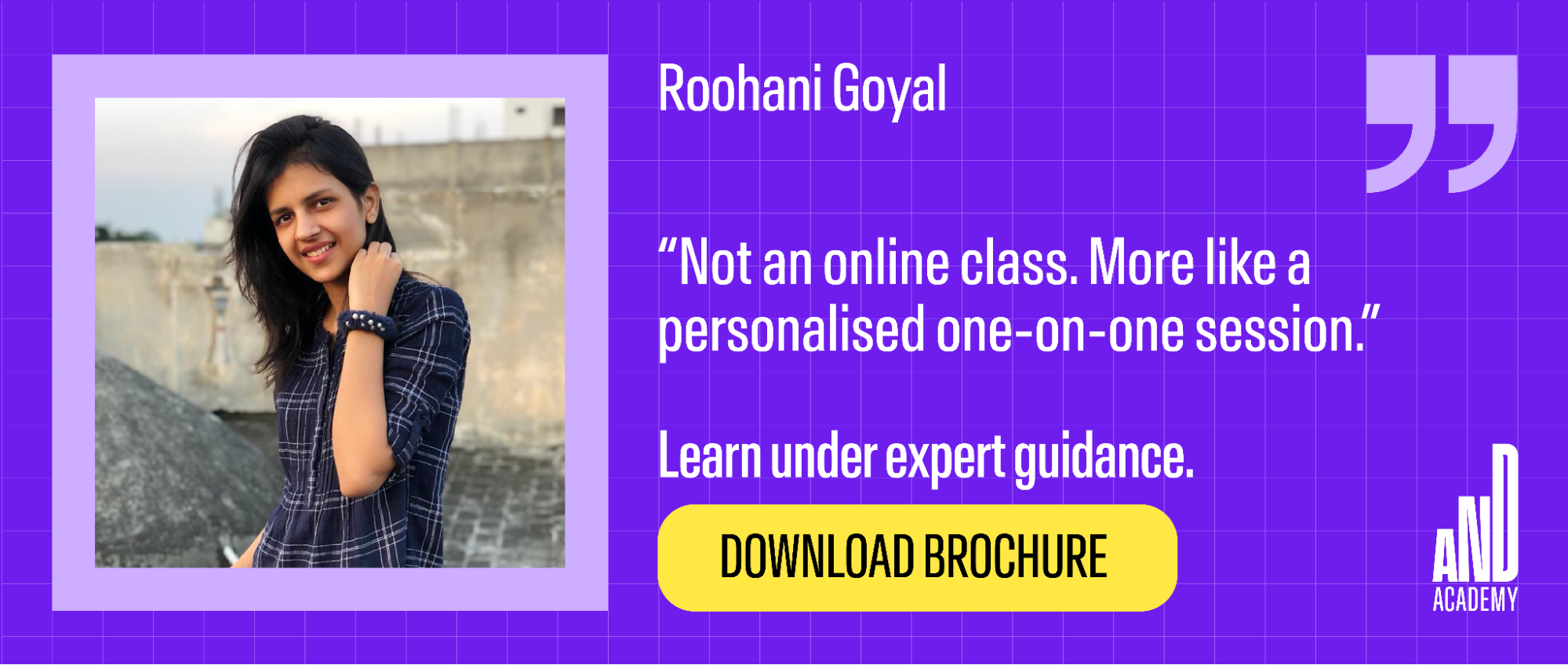
Q3. How have animation and motion graphics evolved from when you pursued them as a student?
At the time I was studying, it was painstaking, hands-on 2D animation. However, I opted for another format of animation called ‘under the camera’ where we would shoot extempore under the Oxbery camera, and this included a lot of stop motion and attempted innovation in stop motion using photographs. While this did help cut the production time, everything was still shot on camera and then edited frame by frame. So it was quite a time-consuming process, considering that I’m from the non-computer generation. So I guess today because of the tools, technology, and computers, the process has become easier in the sense that it takes one-tenth the time it would take earlier to do what we do now.
Even when we teach now, Photoshop and After Effects, at least in terms of technology, is all that one needs to know when it comes to Animation. Also, the fact that these software applications are constantly upgraded, making them easier to operate, has to an extent contributed to the democratisation of animation. What I mean, is that animation was earlier slightly exclusive. Now everybody is at least thinking of being an animator and I’m quite certain in a couple of years animation will be so accessible that a lot more people will be animators. You know how with the availability of smartphones, everyone is a photographer and with the coming in of Reels, everyone is a film-maker. Animation is set to take up a similar route in the coming years.
There have also been changes in the application of animation today. Currently, there is nothing called a static image. Graphic design has largely become motion graphics, logos have become animated, and they’re all supported with sound. In other words, I feel the scope and application of animation has also expanded.
Q4. Please tell us something about your practice and how you built it up over time.
My practice is slightly different from most people in the industry because it is largely academic in nature. I have always been a fan of experimentation and trying out new things, and have pushed the same envelope in the professional scenario as well. Joy and experimentation are the primary prerequisites for me to be a part of any project. This is also because animation is a laborious profession, so the amount of effort that you have to put in makes it unsustainable if you don’t have excitement and joy as essential driving forces.
Another factor that has influenced my practice is innovation. When you’re in a process-oriented craft and you know you have to do it for a certain number of years, it becomes monotonous and boring if you do not innovate. Alternatively, if you like the craft you are practising but do not expand it, then your excitement dulls down. In fact, it was through innovation that I was first introduced to expanded animation. I had to paint the walls of a hospital for a project and the time was limited. The best solution that I came up with was to paint animation frame by frame, and that’s also where it began with expanded animation.
So I think, my practice is rooted in innovation, excitement, and joy, and I have tried to push the boundaries with whatever projects I have worked on.
Q5. What are some lesser-known applications of motion graphics and expanded animation?
If you are talking about applications of animation I think things have just begun. A lot of things have evolved and are still evolving. Take films for instance, I used to think Wallie was the end of storytelling and animation until I saw Spider-Man and I was quite blown away by its visual treatment. It’s a benchmark of treatment and styles, and it’s also interesting how the animation in Spider-man is trying to simulate oil painting animation. Multiple visual treatments are occurring simultaneously on the same screen, from the erasing of the backgrounds to the changing of the colours, it is truly brilliant.
Expanded Animation is the idea of bringing things off the screen onto spaces. If you notice the Indian temples, especially the ones that we see in the Jain temples of Mount Abu. With the whole Buddhist panelling and sequential art, it is a basic form of animation. You have these painted women dancing in multiple forms, but each form is separate, and if you just shoot it in the right orientation we are talking animation.
Q6. What are the top skills an individual needs to excel in the field of Motion Graphics?
I think a knack or an ability to observe things is one of the key skills needed in motion graphics. Second, I would say the ability to see motion in regular, mundane things like raindrops, a leaf falling, a squirrel jumping, or the motion of a moving cycle. While these are trained skills that allow you to differentiate between different types of motion, having an innate understanding of the same is important.
A basic knowledge of Physics is also typically required. To understand momentum and translate it into motion graphics you need to be familiar with the rules of motion. In fact, the basic principles of motion graphics are essentially founded on elementary Physics. For instance, if you are animating a brick and leaf and you drop them, their motion would be dictated by the mass of the object.
Another important skill is the ability to craft an engaging story. Lastly, I think the most important thing for any visual designer is excitement and enthusiasm. If you like what you do, you will improvise and you will be quirky about it, which will help attract more attention.
Q7. Any young talent that has caught your eye in today’s world?
Studio Eeksaurus is doing a lot of service to Indian animation. It is run by Suresh Eriyat in Bombay and their work majorly revolves around Indian ethos, culture, and identity.
Another kid doing some brilliant work is Upamanyu Bhattacharya. He’s currently making a feature film with Annecy and his drawing style, storytelling, and approach, everything is extremely inspiring.
Vaibhav Kumresh, he’s an amazing designer. Having worked on some iconic advertisements like the Vodafone ZooZoos, everything he’s done is so original. His current production is airing on Cartoon Network and is called Lamput; it’s some excellent work to check out.
Q8. If you were to redesign a product or a service, what would it be and why?
I think most of the stuff that is largely designed is essentially useless. These are needs that were created. Take a phone for example, I come from an era when there were no phones and I feel you don’t actually need the phone, but it is there now and we all have it. That said, you also can’t stop progress, things need to get better and that’s one reason why we have ChatGPT today.
So instead of redesigning something, I can speak on how I feel design is going to evolve. I think today when we watch any image on mid-journey or AI-generated images, it is the amount of detail and sophistication that fascinates us because we have seen them for the first time. However, I believe that since this generation will grow up with such technology these images will hold no meaning for them.
Hence, I think in the end it will all go back to the basic common denominator, that one-dimensional circle, square, or triangle. We will go back to Kandinsky and Mondrian and maybe they’ll start making sense to us again. We will also move into holographic images very soon and anyone who can tell a story in a pixel will be the next big name.
Q9. What is your advice for someone looking to pursue a career in this field?
This is something my teacher told me once and back then I didn’t understand it, but today I do and I want to repeat what she said. I think we have to be an individual first and foremost. Like I said before, I could draw when I was a child, so I believed I could be an animator. But when I studied animation I was asked if I could tell a story.
In my opinion, storytelling is the mother of animation and with advancing technology and the democratisation of animation, what you want to say will decide how you say it. You do not need prerequisites like drawing to be an innovator. You should, however, have the knack or the desire to give life to an object and the desire to make it move.
As a teacher as well, I think it has become even more important that students develop their individualistic standpoints. If you do not find your own voice and if your voice is not unique, you’ll get lost in this chaos of moving images. You must tap into your uniqueness and the resources inside of you to leave your mark.
What’s Next:
We hope this interview could further ignite your passion for animation and motion graphics. We understand that this specific edition was limited in its scope, therefore, we highly recommend you check out our other interviews for a holistic view of the design industry and its evolving needs. Alternatively, you can also watch the Ask and Grow series on our official YouTube channel or even get a glimpse of a Brochure Design project by our learner.
In case you are interested in formally pursuing a course in visual design, our Full-Time PG Diploma in Graphic Design course could be an excellent starting point. For further assistance or information, please feel free to reach out to our Course Advisors.
Note: All information and/or data from external sources is believed to be accurate as of the date of publication.
Bringing yet another treasure trove of answers, in this edition of our faculty interview series, Mentor Shaaz Ahmed sheds light on what it means to be an animator, his insights, and personal anecdotes from his experiences in the industry.
Animated movies have always been a crowd favourite for their nostalgic feel and surreal visual aesthetic. But with the field rapidly expanding, animation is no longer limited to movies and has found a place everywhere from logo design to marketing collaterals. This growing popularity has also exponentially boosted the demand for animators and skilled motion graphic designers.
So if you are a design enthusiast looking to explore the field of animation, brace yourself for this conversation with AND Mentor and Founding Director of Mud n Water Studio, Shaaz Ahmed, who brings with him 20+ years of experience in producing animation, ad films, short movies, and documentaries. He is also an alumnus of the renowned National Institute of Design (NID) and has been a recipient of several accolades like Promax Gold (Singapore), MIFF 2016, Toonz Flying Elephant, and MSIFF.
Here’s a brief outline of what we cover:
- How did you come to pursue a career in Animation?
- What was the turning point in your career?
- How have animation and motion graphics evolved?
- Please tell us something about your practice.
- Lesser-known applications of motion graphics and expanded animation?
- What are the top 5 skills needed in Motion Graphics?
- Any young talent that has caught your eye?
- If you were to redesign a product or a service, what would it be and why?
- If someone is looking to pursue a career in this field, where should they begin?
Ready for a peep into the world of animation through this conversation? Read on.
Q1. How did you come to pursue a career in Animation?
This is going to sound bizarre, but my decision to pursue animation was somewhat influenced by Tom and Jerry- majorly because that was all the animation that we got to see back in those times. It drove my fascination for the field, combined with the fact that as a child I could draw cartoons and eventually got into publishing political cartoons while young. Quite a big achievement for a kid, I’d say. So, I believe I always knew I wanted to do something along these lines.
But, initially, I wanted to be an architect and so in my 11th grade, I made a trip to Ahmedabad to visit CEPT. While I was visiting Ahmedabad I thought I might as well check NID, and coincidently, I happened to enter the animation room. That is when I saw all the work that students had made and the process of animation. Given my childhood experiences, at the back of my mind, I always knew I was a cartoonist and I could draw, so I think that visit to NID actually sealed the deal.
Q2. What was the turning point in your career?
Nobody knew of animation back when I started in the field, except for some senior animators. Therefore, in my case, I believe it was serendipity given that I got my first project, a film for the UN, while I was out watching a movie at Siri Fort in New Delhi. But this had a slightly negative impact on my profession too, because now that I had made a film, I became what the industry calls a producer, and nobody was willing to give me a job as an animator. So that’s how I began with films.
Filmmaking, however, was always a passion and I liked the idea of doing animation and all the experimental stuff that I was taught at NID. Then there was this huge influence of the National Film Board of Canada and ideas like identity, originality, culture, and ethos that I wanted to explore. But the Chance Project, the first project of my life, had the biggest impact on the rest of my career trajectory.

Q3. How have animation and motion graphics evolved from when you pursued them as a student?
At the time I was studying, it was painstaking, hands-on 2D animation. However, I opted for another format of animation called ‘under the camera’ where we would shoot extempore under the Oxbery camera, and this included a lot of stop motion and attempted innovation in stop motion using photographs. While this did help cut the production time, everything was still shot on camera and then edited frame by frame. So it was quite a time-consuming process, considering that I’m from the non-computer generation. So I guess today because of the tools, technology, and computers, the process has become easier in the sense that it takes one-tenth the time it would take earlier to do what we do now.
Even when we teach now, Photoshop and After Effects, at least in terms of technology, is all that one needs to know when it comes to Animation. Also, the fact that these software applications are constantly upgraded, making them easier to operate, has to an extent contributed to the democratisation of animation. What I mean, is that animation was earlier slightly exclusive. Now everybody is at least thinking of being an animator and I’m quite certain in a couple of years animation will be so accessible that a lot more people will be animators. You know how with the availability of smartphones, everyone is a photographer and with the coming in of Reels, everyone is a film-maker. Animation is set to take up a similar route in the coming years.
There have also been changes in the application of animation today. Currently, there is nothing called a static image. Graphic design has largely become motion graphics, logos have become animated, and they’re all supported with sound. In other words, I feel the scope and application of animation has also expanded.
Q4. Please tell us something about your practice and how you built it up over time.
My practice is slightly different from most people in the industry because it is largely academic in nature. I have always been a fan of experimentation and trying out new things, and have pushed the same envelope in the professional scenario as well. Joy and experimentation are the primary prerequisites for me to be a part of any project. This is also because animation is a laborious profession, so the amount of effort that you have to put in makes it unsustainable if you don’t have excitement and joy as essential driving forces.
Another factor that has influenced my practice is innovation. When you’re in a process-oriented craft and you know you have to do it for a certain number of years, it becomes monotonous and boring if you do not innovate. Alternatively, if you like the craft you are practising but do not expand it, then your excitement dulls down. In fact, it was through innovation that I was first introduced to expanded animation. I had to paint the walls of a hospital for a project and the time was limited. The best solution that I came up with was to paint animation frame by frame, and that’s also where it began with expanded animation.
So I think, my practice is rooted in innovation, excitement, and joy, and I have tried to push the boundaries with whatever projects I have worked on.
Q5. What are some lesser-known applications of motion graphics and expanded animation?
If you are talking about applications of animation I think things have just begun. A lot of things have evolved and are still evolving. Take films for instance, I used to think Wallie was the end of storytelling and animation until I saw Spider-Man and I was quite blown away by its visual treatment. It’s a benchmark of treatment and styles, and it’s also interesting how the animation in Spider-man is trying to simulate oil painting animation. Multiple visual treatments are occurring simultaneously on the same screen, from the erasing of the backgrounds to the changing of the colours, it is truly brilliant.
Expanded Animation is the idea of bringing things off the screen onto spaces. If you notice the Indian temples, especially the ones that we see in the Jain temples of Mount Abu. With the whole Buddhist panelling and sequential art, it is a basic form of animation. You have these painted women dancing in multiple forms, but each form is separate, and if you just shoot it in the right orientation we are talking animation.
Q6. What are the top skills an individual needs to excel in the field of Motion Graphics?
I think a knack or an ability to observe things is one of the key skills needed in motion graphics. Second, I would say the ability to see motion in regular, mundane things like raindrops, a leaf falling, a squirrel jumping, or the motion of a moving cycle. While these are trained skills that allow you to differentiate between different types of motion, having an innate understanding of the same is important.
A basic knowledge of Physics is also typically required. To understand momentum and translate it into motion graphics you need to be familiar with the rules of motion. In fact, the basic principles of motion graphics are essentially founded on elementary Physics. For instance, if you are animating a brick and leaf and you drop them, their motion would be dictated by the mass of the object.
Another important skill is the ability to craft an engaging story. Lastly, I think the most important thing for any visual designer is excitement and enthusiasm. If you like what you do, you will improvise and you will be quirky about it, which will help attract more attention.
Q7. Any young talent that has caught your eye in today’s world?
Studio Eeksaurus is doing a lot of service to Indian animation. It is run by Suresh Eriyat in Bombay and their work majorly revolves around Indian ethos, culture, and identity.
Another kid doing some brilliant work is Upamanyu Bhattacharya. He’s currently making a feature film with Annecy and his drawing style, storytelling, and approach, everything is extremely inspiring.
Vaibhav Kumresh, he’s an amazing designer. Having worked on some iconic advertisements like the Vodafone ZooZoos, everything he’s done is so original. His current production is airing on Cartoon Network and is called Lamput; it’s some excellent work to check out.
Q8. If you were to redesign a product or a service, what would it be and why?
I think most of the stuff that is largely designed is essentially useless. These are needs that were created. Take a phone for example, I come from an era when there were no phones and I feel you don’t actually need the phone, but it is there now and we all have it. That said, you also can’t stop progress, things need to get better and that’s one reason why we have ChatGPT today.
So instead of redesigning something, I can speak on how I feel design is going to evolve. I think today when we watch any image on mid-journey or AI-generated images, it is the amount of detail and sophistication that fascinates us because we have seen them for the first time. However, I believe that since this generation will grow up with such technology these images will hold no meaning for them.
Hence, I think in the end it will all go back to the basic common denominator, that one-dimensional circle, square, or triangle. We will go back to Kandinsky and Mondrian and maybe they’ll start making sense to us again. We will also move into holographic images very soon and anyone who can tell a story in a pixel will be the next big name.
Q9. What is your advice for someone looking to pursue a career in this field?
This is something my teacher told me once and back then I didn’t understand it, but today I do and I want to repeat what she said. I think we have to be an individual first and foremost. Like I said before, I could draw when I was a child, so I believed I could be an animator. But when I studied animation I was asked if I could tell a story.
In my opinion, storytelling is the mother of animation and with advancing technology and the democratisation of animation, what you want to say will decide how you say it. You do not need prerequisites like drawing to be an innovator. You should, however, have the knack or the desire to give life to an object and the desire to make it move.
As a teacher as well, I think it has become even more important that students develop their individualistic standpoints. If you do not find your own voice and if your voice is not unique, you’ll get lost in this chaos of moving images. You must tap into your uniqueness and the resources inside of you to leave your mark.
What’s Next:
We hope this interview could further ignite your passion for animation and motion graphics. We understand that this specific edition was limited in its scope, therefore, we highly recommend you check out our other interviews for a holistic view of the design industry and its evolving needs. Alternatively, you can also watch the Ask and Grow series on our official YouTube channel or even get a glimpse of a Brochure Design project by our learner.
In case you are interested in formally pursuing a course in visual design, our Full-Time PG Diploma in Graphic Design course could be an excellent starting point. For further assistance or information, please feel free to reach out to our Course Advisors.
Note: All information and/or data from external sources is believed to be accurate as of the date of publication.

